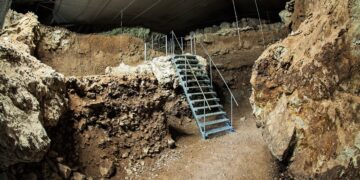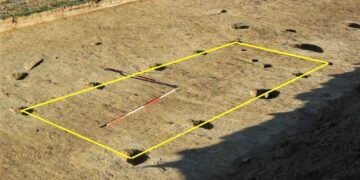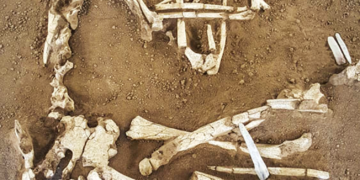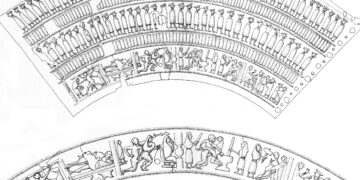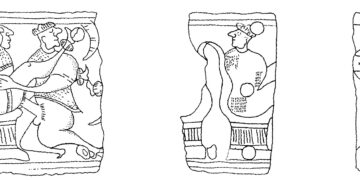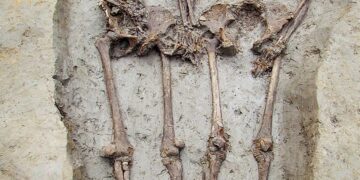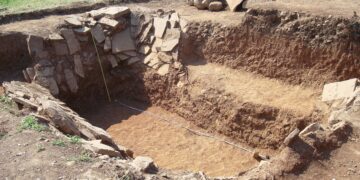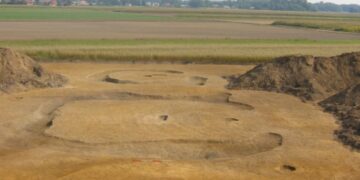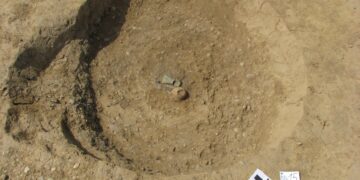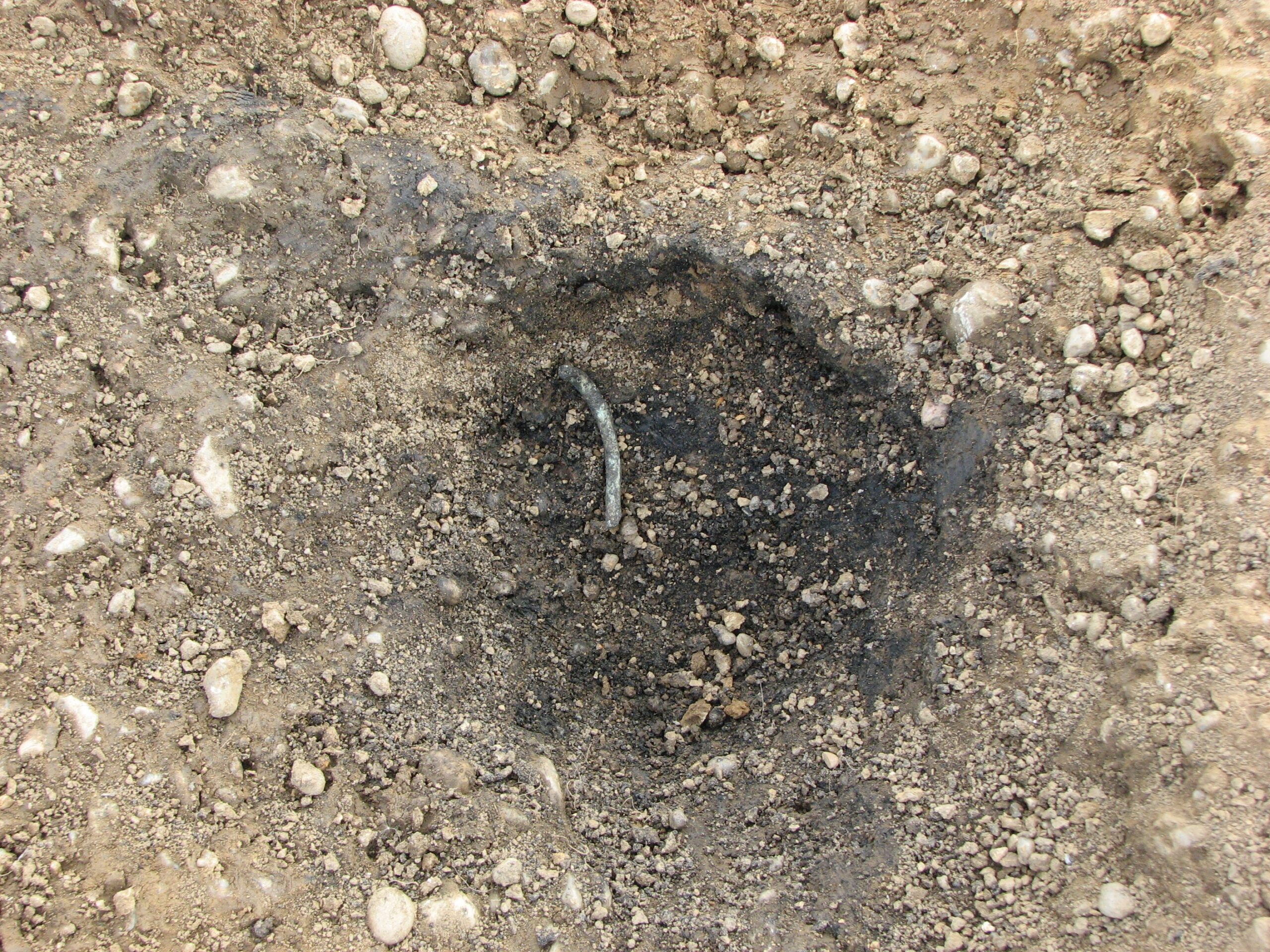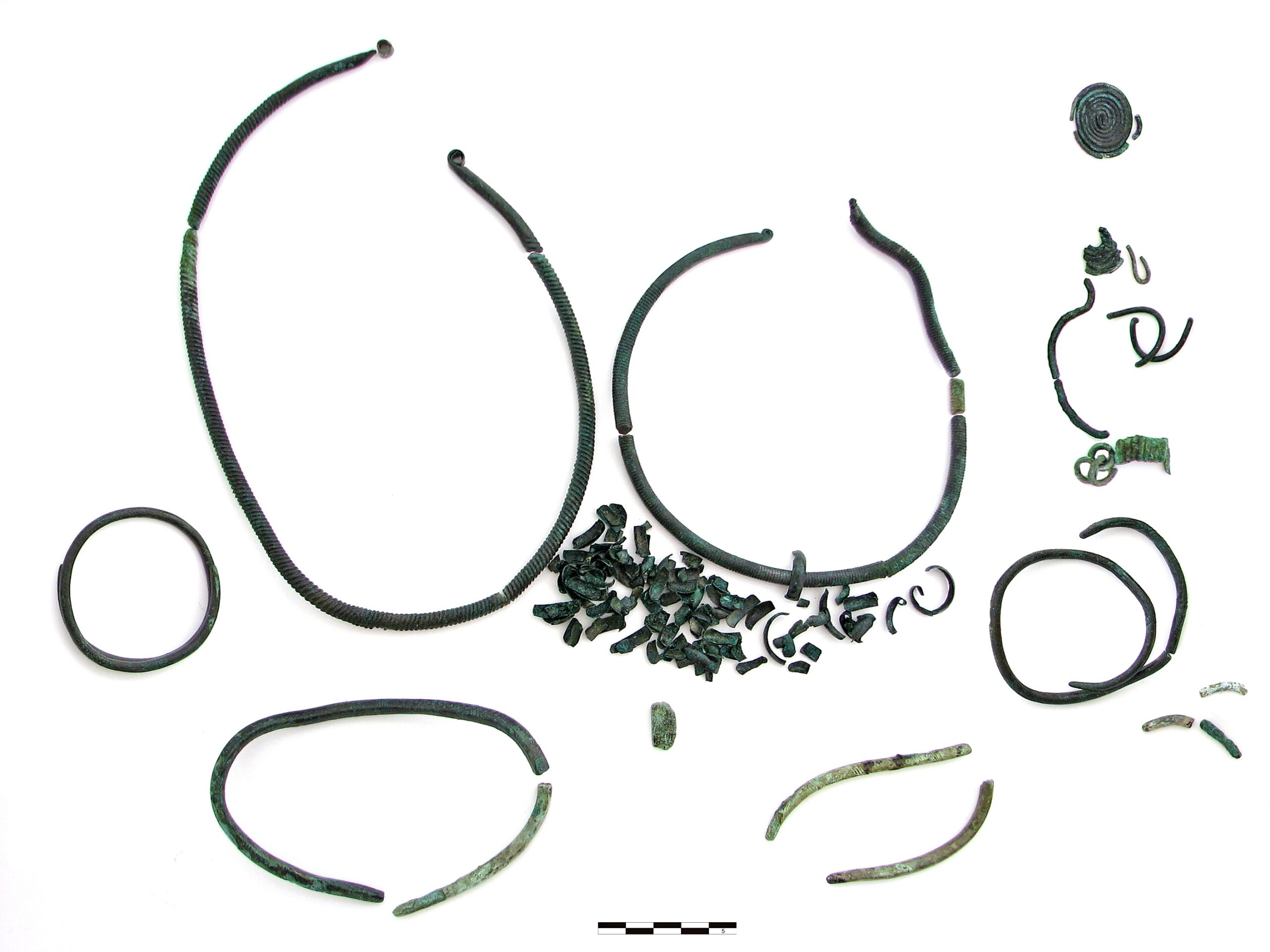A series of related cultures distinctive of the European late Bronze Age, broadly 1300 BC through to 850 BC, were distinguished by their cemeteries of cremated burials deposited as urnfields from the previous periods. This cultural phenomenon was sometimes known collectively as the Urnfield Culture. Within a few generations, the various cremation rites were then superseded over the entire geographical area adhering to the practice. The large-scale standardization of burial customs only seems possible through strong regimentation due to persisting religious precepts. As this rite was most probably reinforced by a specific and effective religious idea, we can in the 12th century BC discern a radical paradigmatic shift in religious perceptions.
In grave 14, from the Urnfield cemetery in Zavrč in Slovenia, a 6 to 12 years old child was buried in the 11th century BC. Despite the young age, the deceased was buried with a full set of bronze attire – two torques additional adorned with smaller rings, two bracelets and two ankle rings as well as a fibula and a pendant. According to the composition, we can assume that we are looking at the burial of a young girl who was of special importance to her community. Her status was reflected in the number of grave goods she got and the fact that the complex burial rite included the violent fragmentation and partial destruction of her jewellery. Died in the Late Bronze Age, she will always remain anonymous, but her status will again come to life through archaeological storytelling.


